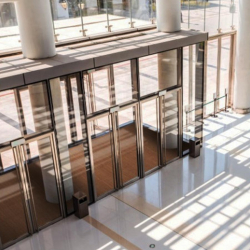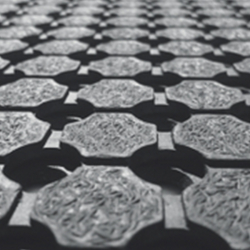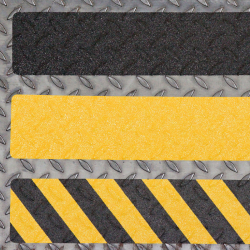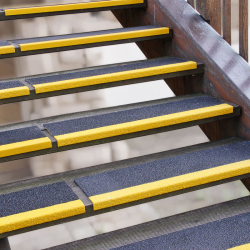According to article 41 of the law of February 11, 2005 : "Accessibility is due to all, and in particular to disabled people, whatever the type of disability - physical, sensory, cognitive, mental or psychological". Making your premises accessible to all is therefore an obligation.
In this article, NeoSol explains the main accessibility standards to be implemented and complied with in order to be in compliance and to welcome all types of public.
PRM accessibility in ERP
Before opening, any new establishment open to the public must comply with the relevant standards. Accessibility is governed by strict regulations and standards that enable the public, and more specifically people with reduced mobility, to access an establishment safely and without difficulty. This applies to all types and categories of ERP. To find out more, we invite you to consult the ERP classification.
There are 4 main types of disability: motor or physical, visual, mental or auditory. Today ,40% of the French population is disabled, with 3.5% suffering from motor impairments, 1.5 million visually impaired and 6 million hearing impaired.
It is therefore essential to enable this population to access ERP facilities easily and safely. Despite these figures, many people still suffer from inaccessibility. This is the case, for example, in hotels, restaurants, stores and other public places. To remedy this problem, standards have been introduced to regulate the accessibility of buildings.
What do regulations say about PRM accessibility?
The February 11, 2005 law on equal rights and opportunities, participation and citizenship for PRMs has been applicable to ERP buildings since January1, 2007. This law stipulates that all establishments, whether renovated or new, must comply with accessibility rules. Since January 2015, all establishments, including older ones, have been required to redesign certain areas of their buildings to comply with the law. To do so, they must sign up to aprogrammed accessibility agenda (Ad'AP), and undertake the redevelopment work within a timeframe of 3 to 9 years.
Inspections are carried out in the form of an accessibility diagnosis and inventory. All equipment and components are analyzed, and assigned a rating from 1 (not accessible) to 4 (accessible with comfort of use). At the end of this assessment, a report is drawn up listing the points for improvement and a financial estimate of the work required.
New decrees have reinforced the regulations. These include
- Decree n°2017-431 of March 28, 2017
- Arrêté du 20 avril 2017
- Order of April 28, 2017
Compliance with the standards and criteria established by this compliance law is therefore an obligation for all ERP. They must comply with the following rules:
- The main entrances to the establishment:
This must make it easier for wheelchair users or the visually impaired to cross this entrance in complete peace of mind and safety. To this end, the installation of an access ramp, nails, a podotactile strip or an orientation aid is mandatory. There are other ways of facilitating the movement of PRMs, notably in elevators, staircases and washrooms.
- Appropriate lighting:
Having good lighting in your establishment will help PRMs and other visually impaired people to move around normally. Natural light is not enough, which is why good artificial lighting is part of the regulations. Light output must vary according to the area to be lit.
- Adapt signage:
Wayfinding signs must be legible both at a distance and up close. Adapting the right letter size is important. For example, for a person 5 meters away from a sign, the letters should be 150 mm and the logo 250 mm. This is also the case for personalized entrance mats with a message. The message must be legible and of an appropriate size.
NeoSol's solutions for welcoming PRMs into your ERP in complete safety
NeoSol is well aware of the major issues involved in building accessibility and the various standards to be met for people with reduced mobility. That's why we offer solutions adapted to every situation. We have the floor coverings and accessibility equipment you need to comply with these standards:
- Non-slip mat;
- Podotactile tile;
- Podotactile nails;
- Signage mat;
- Stair nosing;
- Warning markings;
- Luminous anti-slip strip;
Be aware that failure to comply with these standards can not only have serious consequences for PRMs, but also run the risk of incurring fines in the event of an inspection.
NEED ADVICE?
Contact Solène
![Fire classification, UPEC and ISO 10874 standards Fire classification, UPEC and ISO 10874 standards]() Fire classification, UPEC and ISO 10874 standardsFire rating and quality standards should be one of the main criteria to consider before buying professional flooring. Find out why with NEOSOL.Read More
Fire classification, UPEC and ISO 10874 standardsFire rating and quality standards should be one of the main criteria to consider before buying professional flooring. Find out why with NEOSOL.Read More![Static electricity risks and solutions Static electricity risks and solutions]() Static electricity risks and solutionsHow dangerous is static electricity for employees? How do industries reduce the risks associated with electrostatic discharge?Read More
Static electricity risks and solutionsHow dangerous is static electricity for employees? How do industries reduce the risks associated with electrostatic discharge?Read More![Professional mats: how to care for them? Professional mats: how to care for them?]() Professional mats: how to care for them?Professional mat maintenance is essential to maintain the longevity of your mat and the safety of passers-by. NEOSOL, the flooring expert, reveals its different maintenance methods.Read More
Professional mats: how to care for them?Professional mat maintenance is essential to maintain the longevity of your mat and the safety of passers-by. NEOSOL, the flooring expert, reveals its different maintenance methods.Read More![Accessibility and ERP: how do I know if I'm in compliance? Accessibility and ERP: how do I know if I'm in compliance?]() Accessibility and ERP: how do I know if I'm in compliance?Accessibility must be a priority for every ERP. But you still need to know if you're in compliance. To help you, NeoSol, the professional flooring specialist, tells you more.Read More
Accessibility and ERP: how do I know if I'm in compliance?Accessibility must be a priority for every ERP. But you still need to know if you're in compliance. To help you, NeoSol, the professional flooring specialist, tells you more.Read More


















Leave a comment